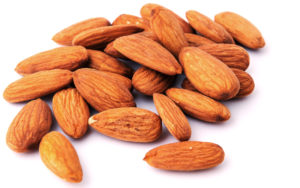7 Ways to Lower your Setpoint Weight and Stop Diabesity
If you’re always battling your weight, you’re not alone. Studies show the average American dieter makes four weight loss attempts a year, and even if the fourth try is successful, it won’t last. About 90 to 95 percent of dieters regain all the weight they lost in one to five years, proving that conventional diets don’t work. Now that the diabesity epidemic has made losing weight an even bigger emergency, people are looking for answers to their weight loss dilemma. Thousands of studies have shown that the answer to losing weight permanently is to lower your setpoint weight.
Setpoint Weight: The Key to Ending Diabesity?
Diabesity is a fairly new term for a combination of diseases that are not new – obesity and type 2 diabetes. Since 1980, the global rates of both diseases in adults have doubled and tripled, respectively.
Obesity and diabetes share the same underlying cause, an inadequate insulin production or response, which makes these two diseases interdependent. If you’re obese, you have an increased risk of developing type 2 diabetes, and vice versa.
The key to ending the diabesity epidemic, and your risk of developing this disease, is to lower your setpoint weight.
Setpoint Weight Basics
The setpoint is the weight your body believes you should weigh based on input from your hormones. For your survival, it will do everything it can to keep you within about 10-20 pounds of this weight. If you cut calories, the body thinks you’re starving and slows your metabolism.
Oh, you will lose weight on a low-cal diet, but research has proven that your metabolism will then be slowed down. This means that you will have to eat a low-calorie diet to maintain that weight loss. You’ll not be able to go back to “normal” eating without regaining the weight. How miserable would that be? Not only that, but your body would adjust to those lower calories, so you would have to eat progressively fewer calories over time to maintain your weight loss.
The only way to lose weight permanently is to lower your setpoint weight. If you do that, you will burn fat like a naturally thin person, eat yummy foods, and avoid diabesity.
Easy Ways to Lower your Setpoint Weight and End Diabesity
Here are some easy ways to lower your setpoint weight and avoid diabesity.
Eat Non-Starchy Vegetable to End Diabesity
Eating lots of non-starchy vegetables is key to lowering your setpoint weight and avoiding diabesity. Non-starchy veggies are loaded with fiber, which swells up in your stomach. This fills you up quickly and keeps you full longer.
Setpoint Diet Tip: Fill half your plate with non-starchy vegetables. Green leafy vegetables are your best choice, and you don’t have to dish them out on your plate. Blend them up with some low-fructose fruit, such as strawberries, for a delicious green smoothie.
Load up on Protein for Lower Setpoint Weight
Research has shown that we burn many more calories digesting protein than we do any other macronutrient. It is also impossible for your body to store protein as fat. Finally, protein is a key satiety nutrient. Harvard researchers discovered that the amount of protein in food affects our short- and long-term satiety hormones. The more calories you eat with protein, the more “full” signals your hormones send to your brain.
Setpoint Diet Tip: Eat at least 30 grams of protein with every meal. Good sources include egg whites, salmon, and plain Greek yogurt. (A serving of protein is the size of a man’s hand.)
Enjoy Whole-Food Fats
Eating fat doesn’t make you fat, quite the contrary. Studies have proven that if we eat whole-food fats instead of starches and sweets, our bodies will start to prefer burning fat for fuel instead of sugar. You’ll lose fat by eating whole-food fats! 
Setpoint Diet Tip: Eat the whole food and not just the oil. It’s okay to add a little coconut oil to a recipe, for instance, but eating coconut is the thing that will help lower your setpoint weight and prevent or reverse diabesity.
Avoid Sugars and Starches to Lower Setpoint Weight
Eating a diet of sugars and starches is what caused the diabesity epidemic, and avoiding these two things while also eating so many SANE foods that you crowd out the inSANE ones, is what will end it and lower your setpoint weight. Sugar causes inflammation throughout the body, and it raises the setpoint weight even if you stay within your calorie limit. Starchy foods are easy to overeat and are extremely fattening. It’s better to avoid them as much as possible.
Setpoint Diet Tip: Do most of your grocery shopping in the perimeter of the store. The center of the store is where you’ll find the processed foods, with all the sugars and starches.
Get Enough Sleep to Reverse Diabesity
Studies have shown that sleep deprivation causes weight gain or inability to lose weight. Though the exact reason for this is unclear, research has shown that those who get enough sleep reduce their levels of cortisol, a hormone that causes fat accumulation in the belly. In any event, sleep deprivation does raise your setpoint weight and contributes to diabesity.
Setpoint Diet Tip: Get at least 7-8 hours of uninterrupted sleep per night.
De-stress to Lower Setpoint Weight and End Diabesity
We live in a high-stress society, which doesn’t help anyone’s nerves – or their setpoint weight. Living under constant stress has been shown to increase belly fat because stress causes your body to produce more cortisol, the stress hormone.
Setpoint Diet Tip: Make it a point to relax every day. Go golfing with a friend. Meditate. Take up Tai Chi in the park. De-stressing will help lower your setpoint weight.
Drink Plenty of Water
Water is extremely important for lowering your setpoint weight. It helps your cells burn fat, and it helps keep you from overeating. Studies show that many people mistake dehydration for hunger, and so end up eating when they’re really thirsty.
Setpoint Diet Tip: Drink primarily water, not sugary beverages. You can also drink green or black tea. If you want to know whether you’re well-hydrated, check the color of your urine. If it is dark yellow or brown, you need more water.



